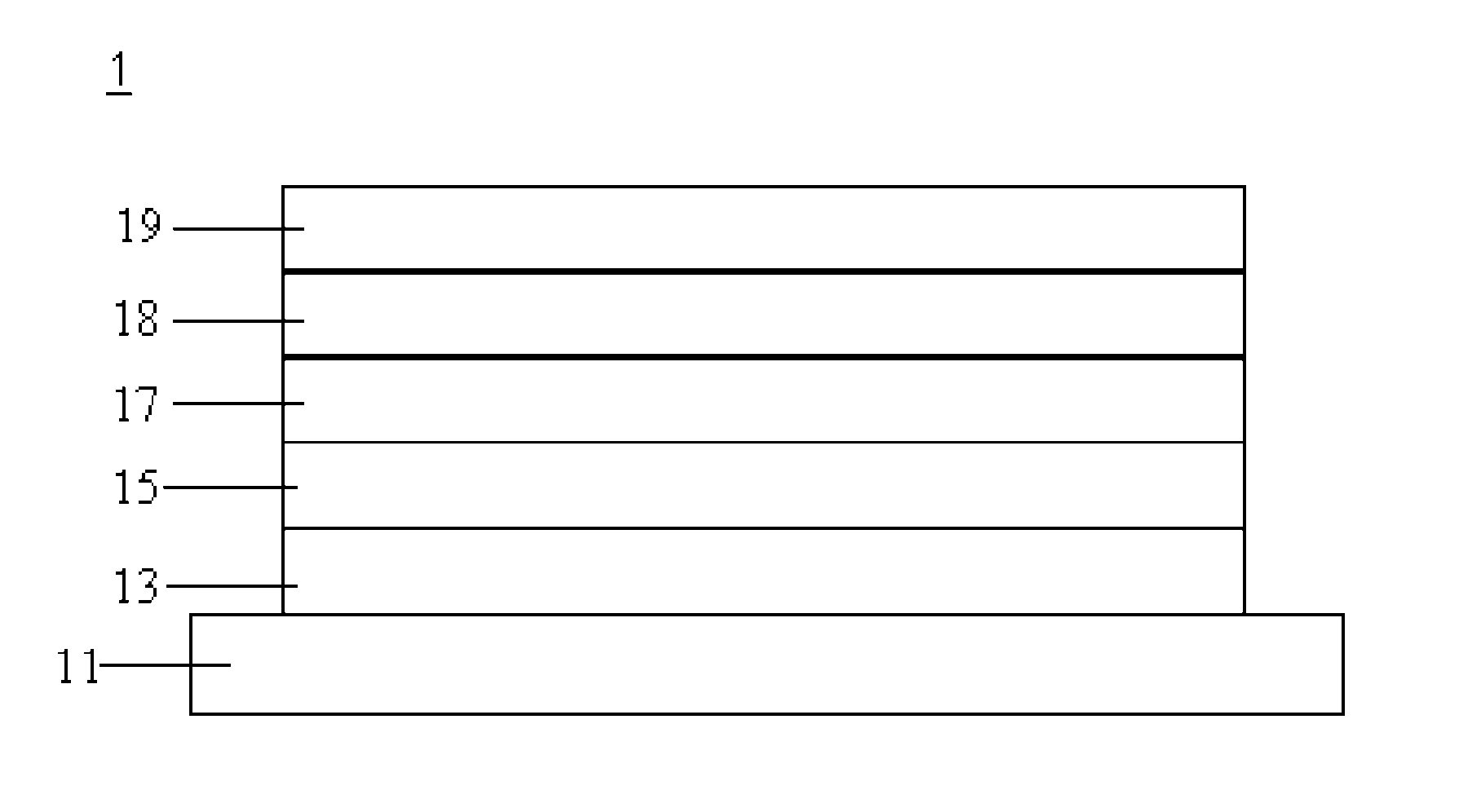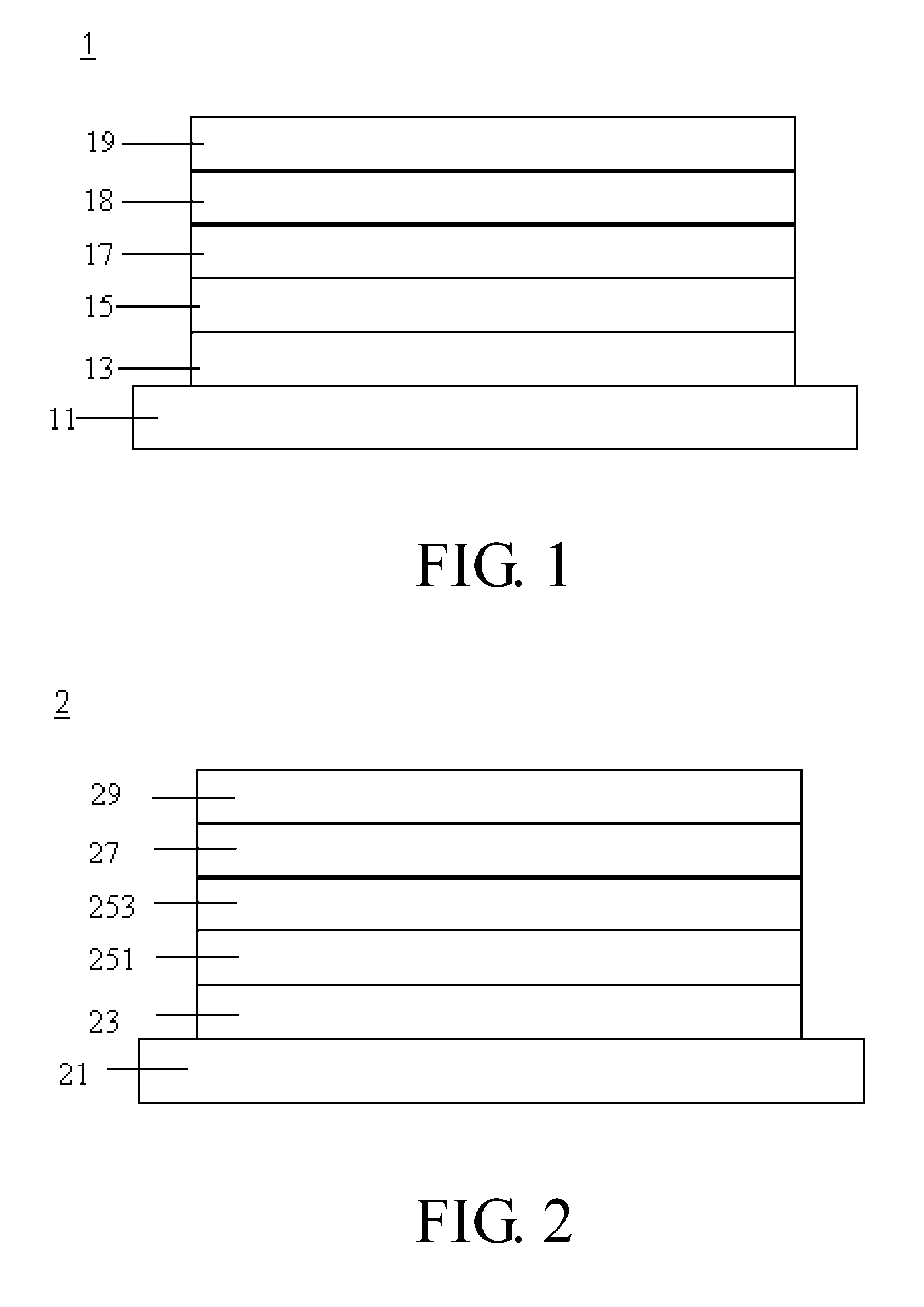Curable material and its application
a technology of curable materials and conductive materials, applied in the field of curable materials, can solve the problems of reducing the luminous efficiency of organic light emitting diodes, the difference in energy level between the hole transporting layer material and the emitting material is too large, and the hole transporting ability of most blue or green luminescent materials is poor
- Summary
- Abstract
- Description
- Claims
- Application Information
AI Technical Summary
Benefits of technology
Problems solved by technology
Method used
Image
Examples
example 1
The Preparation of Curable Material
[0045][The Preparation of Curable Material 1]
[0046]First, N,N-bis(4-bromophenyl)-p-(4-vinylphenyl)aniline (3) was synthesized. Tri(4-bromophenyl)amine (1) and p-vinylphenyl boric acid (2) with a molar ratio of about 2:1 and zero valence palladium compound (PPh3)4Pd(0) as a catalyst in a suitable amount were dissolved in a mixture solution consisting of tetrahydrofuran (about 20 mL) and 2M potassium phosphate aqueous solution (about 11 mL). The resulting mixture was first purged with argon and vigorously stirred at about 100° C. and reacted for about 48 hours. The reaction scheme is as follows:
[0047]
[0048]The obtained mixture after reaction was poured into 50 mL water and extracted with dichloromethane (about 250 mL) twice. The combined organic extracts were dried by anhydrous magnesium sulfate and further concentrated by rotary evaporation. Further purification by silica gel column chromatography (ethyl acetate / n-hexane) afforded N,N-bis(4-bromophe...
example 2
Luminous Efficiency Test
[0066][OLED 1]
[0067]The curable material 1 of the present invention was used as a hole transporting layer material to fabricate OLED 1 with a structure as shown in FIG. 2. In particular, an ITO layer was deposited on a glass substrate as an anode. The ITO-coated glass substrate was washed via ultrasonic bath and further treated in a UV-ozone chamber. A PEDOT: PSS layer was spin-coated on the top of the anode and annealed at about 150° C. for about 15 minutes. Then, a toluene solution of the curable material 1 of the present invention was spin-coated on the top of the PEDOT: PSS layer (about 10 mg / mL; about 2000 rpm) and thermally treated at about 230° C. for about 30 minutes under nitrogen atmosphere to cure the curable material 1 to form a hole transporting layer (about 40 nm). Poly(9,9-dioctylfluorene) was then spin-coated on the top of the hole transporting layer as an emitting layer (about 70 nm). Finally, a thin cathode layer was deposited by successive ...
PUM
| Property | Measurement | Unit |
|---|---|---|
| structure | aaaaa | aaaaa |
| luminescent | aaaaa | aaaaa |
| electroluminescent | aaaaa | aaaaa |
Abstract
Description
Claims
Application Information
 Login to View More
Login to View More - R&D
- Intellectual Property
- Life Sciences
- Materials
- Tech Scout
- Unparalleled Data Quality
- Higher Quality Content
- 60% Fewer Hallucinations
Browse by: Latest US Patents, China's latest patents, Technical Efficacy Thesaurus, Application Domain, Technology Topic, Popular Technical Reports.
© 2025 PatSnap. All rights reserved.Legal|Privacy policy|Modern Slavery Act Transparency Statement|Sitemap|About US| Contact US: help@patsnap.com



